Why You Need These Gluten Free Egg Noodles

- Simple ingredients: Made with just a few basic ingredients — eggs, gluten-free flour, and water — no fancy additives or fillers.
- Easy to make: No pasta machine needed! These noodles are quick to whip up with just a rolling pin, knife, and a lightly-floured surface.
- Just like traditional egg noodles: Many store-bought gluten-free pastas can be hit or miss. This recipe uses a 1:1 gluten-free flour blend to ensure the perfect texture and a taste just like regular egg noodles.
- Whole ingredients: Have the satisfaction of knowing exactly what goes into your pasta.
Use these fresh noodles in our instant pot chicken noodle soup, cottage cheese alfredo, or instant pot beef stroganoff.
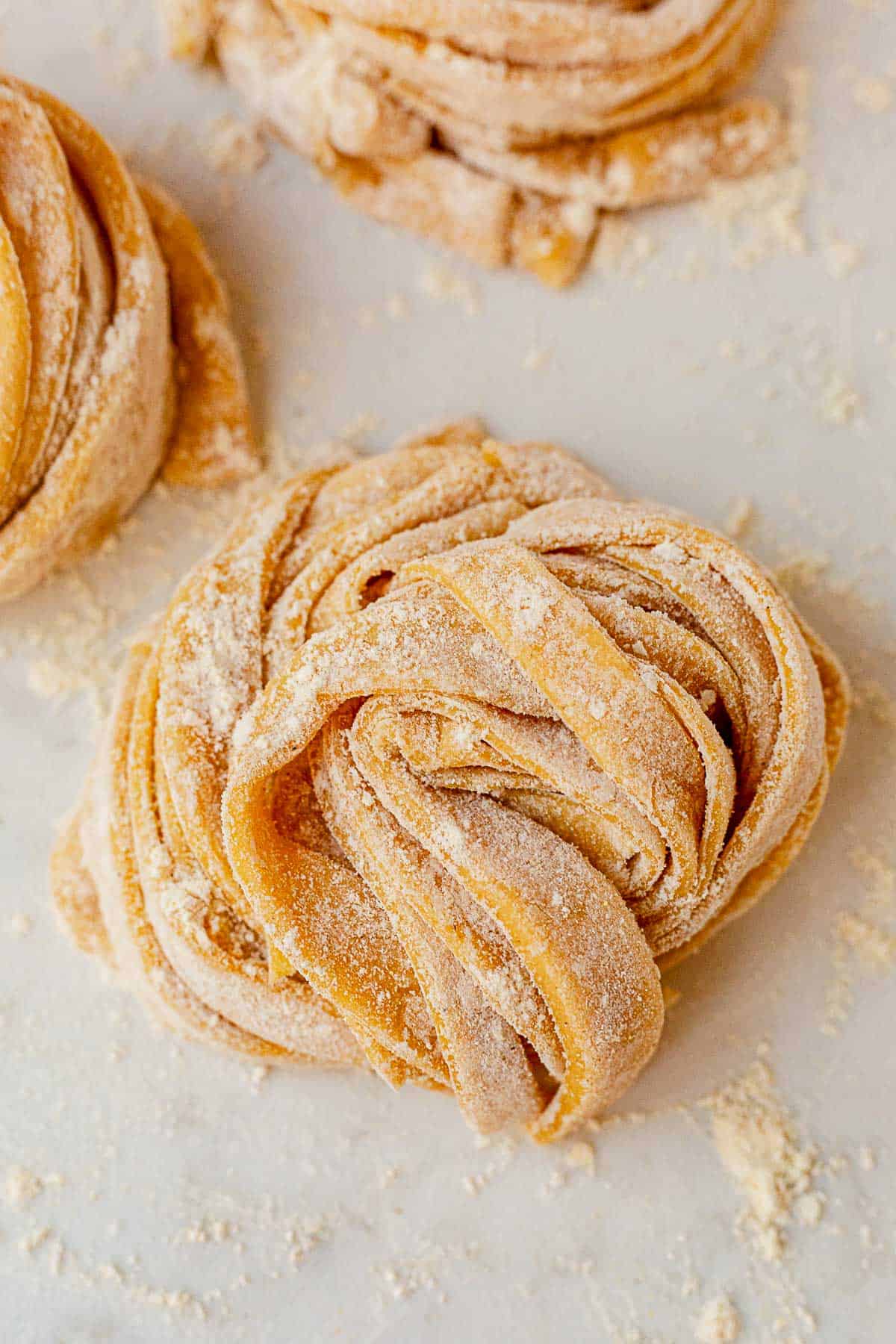
Ingredients Notes
- Gluten-free flour: Choose one that contains a mix of flours and xanthan gum. I love using Bob’s Red Mill 1:1 Baking Flour.
- Whole eggs and egg yolk: Eggs (the base of traditional egg noodles) provide structure and richness. The extra yolk adds an even more tender texture.
- Water: A small amount of water helps bring the dough together. Add it gradually if the dough is too dry.
How to Make Gluten Free Egg Noodles
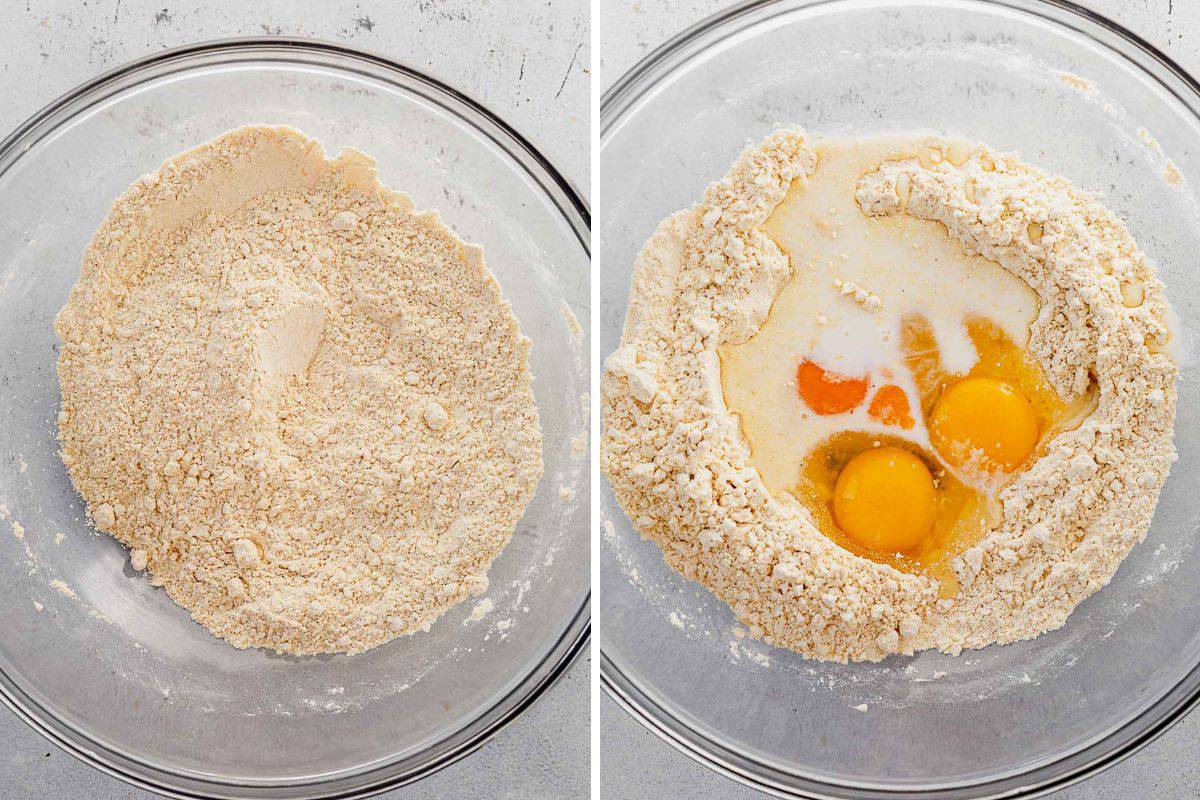
- Make the dough. Mix the dry ingredients then create a well and add the wet ingredients in the center.
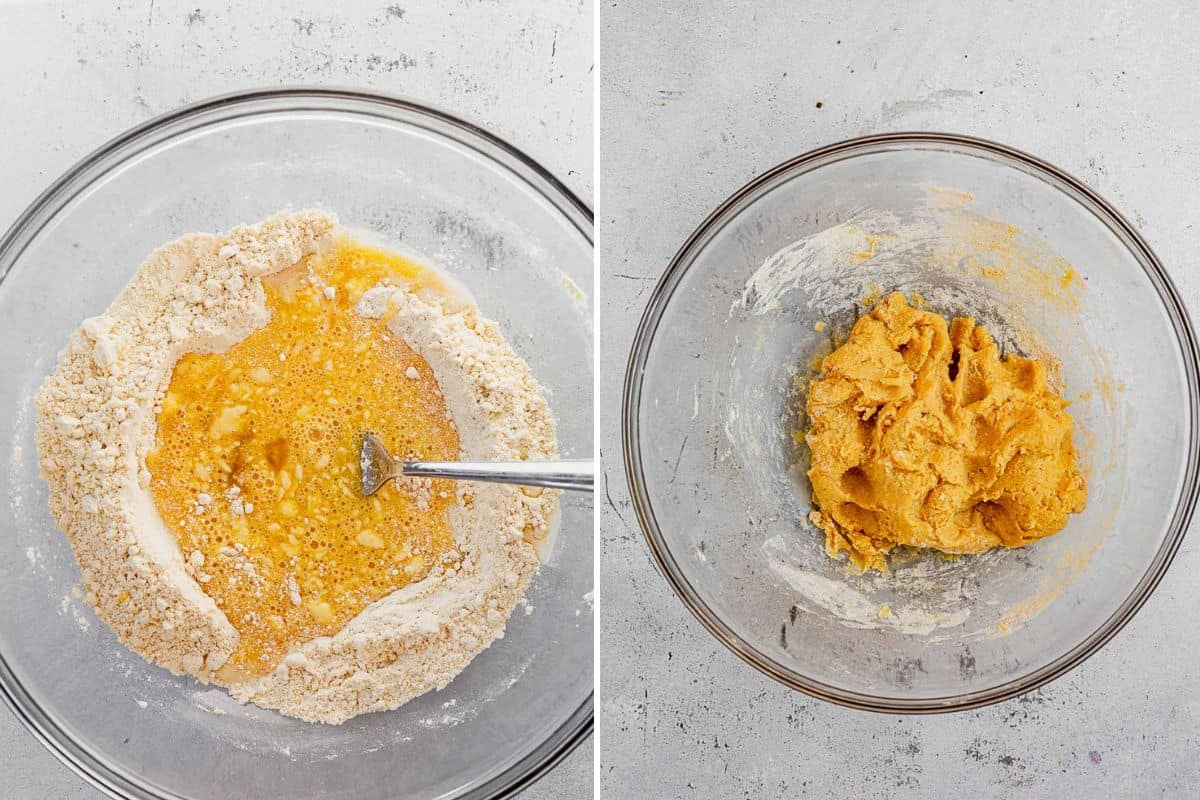
- Mix the pasta dough: Whisk the wet ingredients, slowly pulling the flour mixture in to mix the eggs and flour together. Add the remaining 1/2 cup as needed until it forms a slightly sticky pasta.
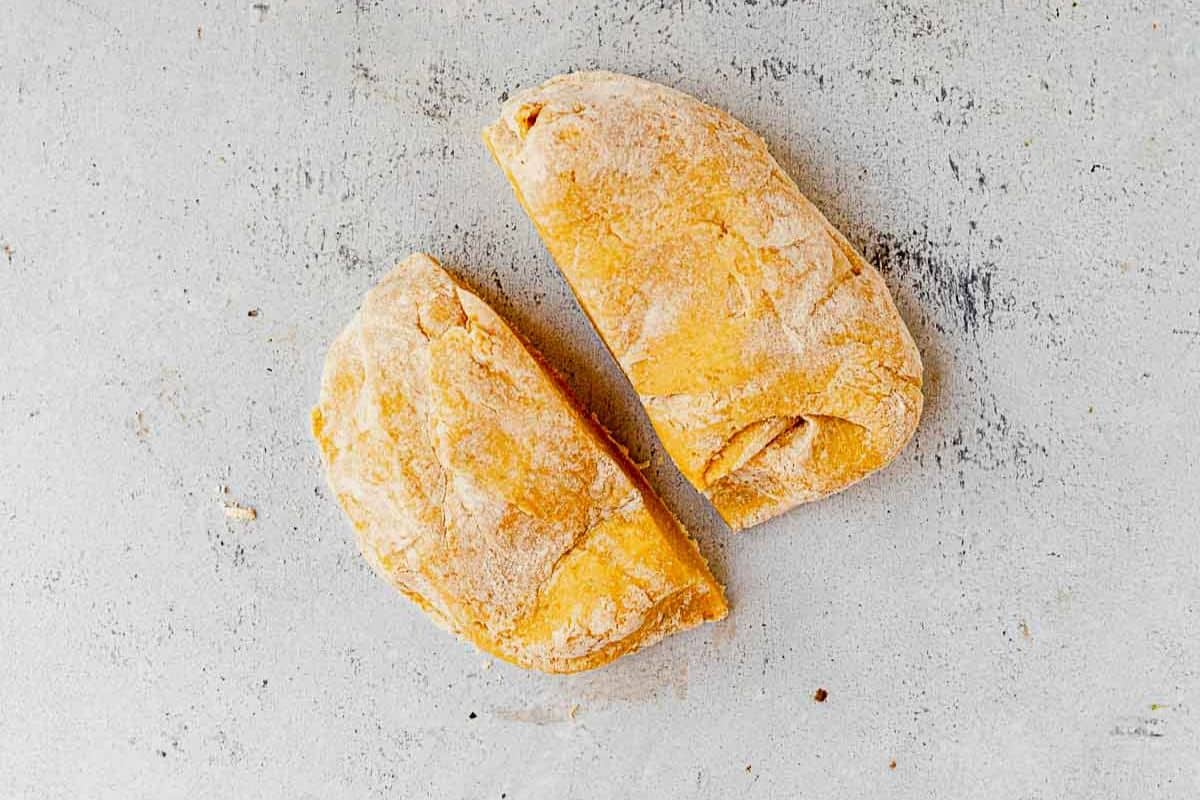
- Knead the dough: Turn the dough out onto a generously floured work surface and knead for 2-3 minutes. Form the dough into a disc and cut it in half so you have two dough balls.
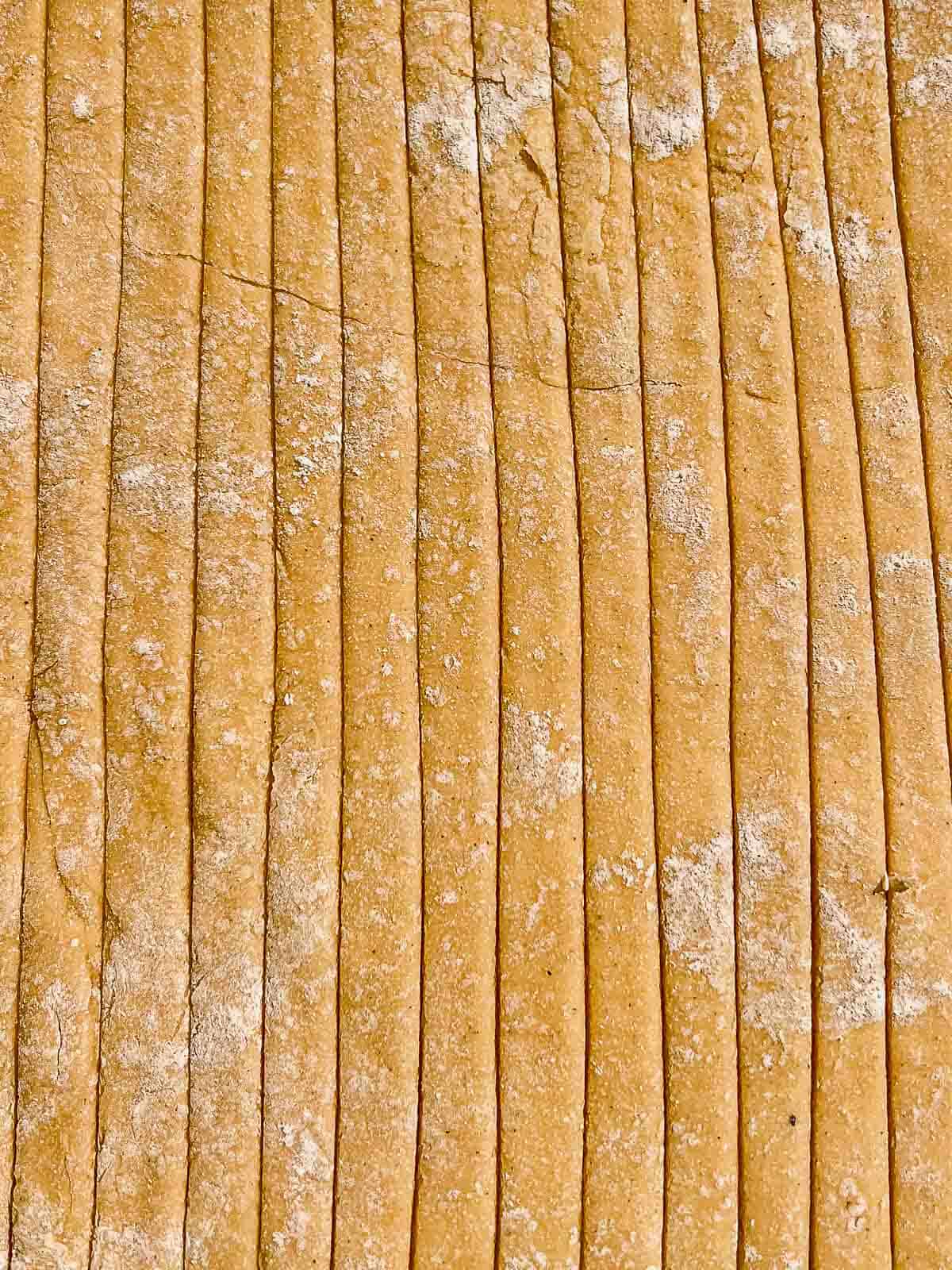
- Form the pasta. Roll the pasta dough it into a 1/4-inch thick rectangle. Cut 1/2-inch to 1-inch strips in the dough. Toss the cut pasta with extra flour to prevent them from sticking together.
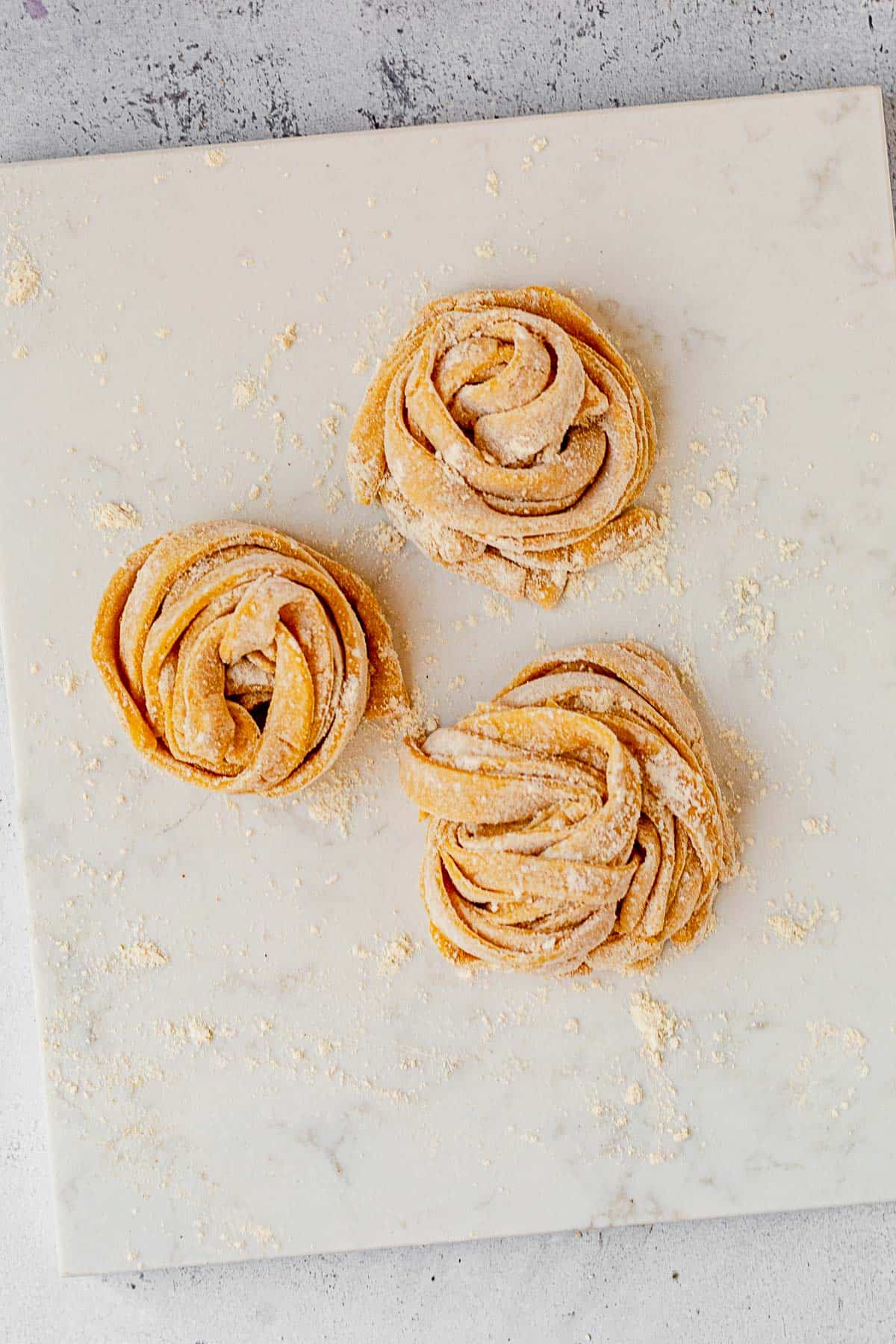
- Cook the pasta. Divide the pasta in half and twirl them in a ball to create loose nests. Repeat with the remaining half of the dough. Use the fresh pasta immediately by cooking in boiling water for for 8-12 minutes or adding it directly into the broth of your favorite soup to cook.
Prefer to use a pasta machine? Learn how to use a pasta machine for this recipe.
Recipe FAQs
Egg noodles traditionally contain wheat-based flour, which is a source of gluten. However, there are gluten-free egg noodles out there. These gluten-free egg noodles are made using alternative flours, such as rice flour, corn flour, potato flour, or a combination of gluten-free flours, which do not contain wheat or gluten.
If you’re looking for noodles with the least amount of gluten or noodles that are suitable for a low-gluten diet, there are a few options to consider, like brown rice pasta, chickpea pasta, and quinoa noodles.
My favorite gluten-free pasta brand is Jovial.
Tips for Success
- Don’t overcook: Keep an eye on your noodles while they cook. Overcooking can cause them to break apart, so aim for al dente (tender but with a slight chew).
- Flour the surface generously: Gluten-free dough tends to be sticky, so be sure to keep your work surface floured to prevent sticking while rolling and cutting.
- Adjust dough consistency: If your dough feels too dry or crumbly, add a little more water (1 tablespoon at a time) until you can knead it into a smooth ball.
What to Serve with Gluten Free Egg Noodles
Use these homemade egg noodles in any favorite pasta recipe where you might use regular pasta noodles. Here are a few ideas:
- Make easy gluten-free meatballs to go on top.
- Stir-fry the noodles with vegetables, protein, and savory sauces to make chow mein.
- Make lasagna noodles out of them and try them in this instant pot lasagna soup or this butternut squash and spinach lasagna.
- Try them in this quick and easy Boursin cheese pasta recipe.
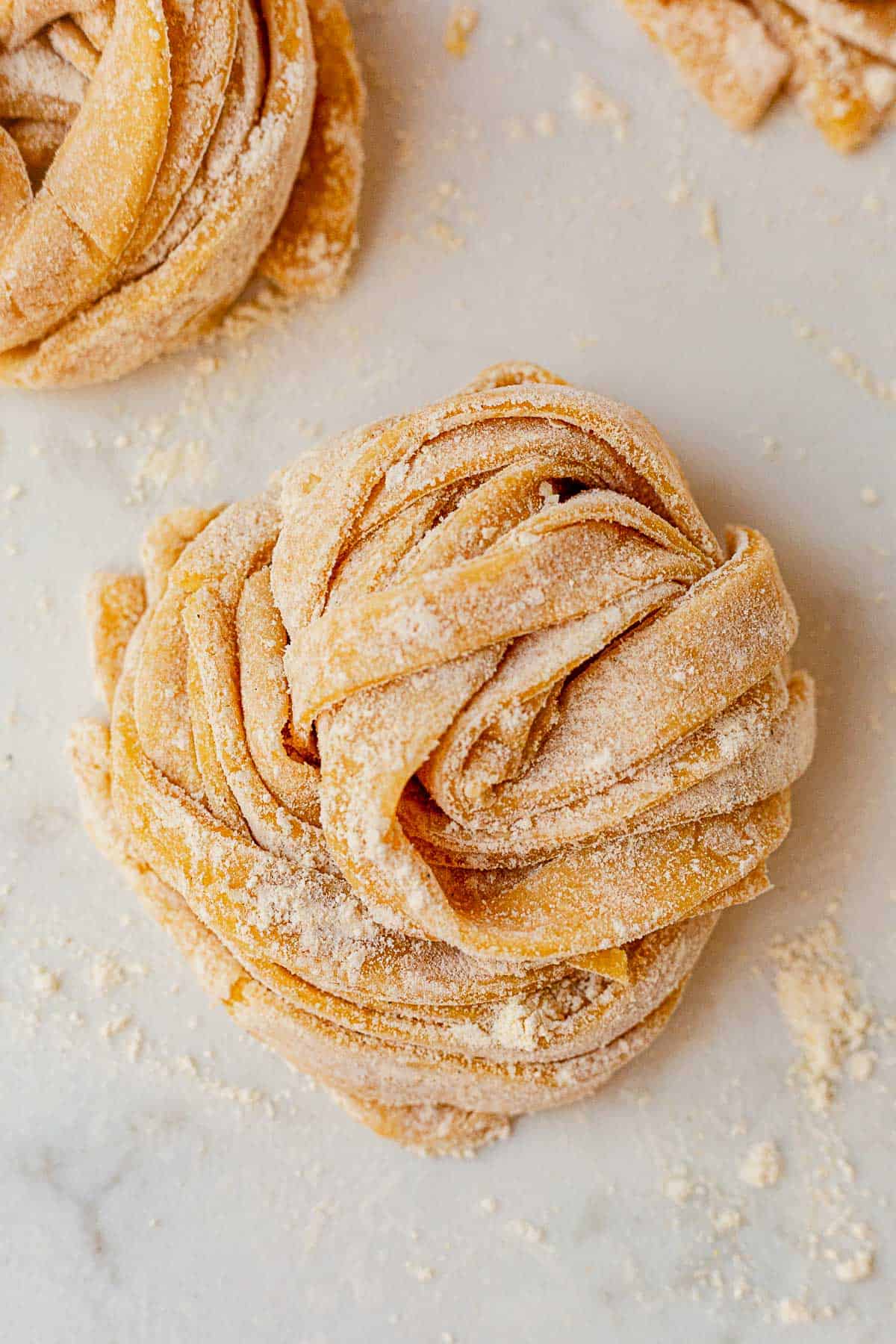
If you make this recipe, I’d love for you to give it a star rating ★ below. You can also tag me on Instagram so I can see it!
More Gluten-Free Pasta Recipes
Gluten Free Egg Noodles
Save this Recipe!
Instructions
- Generously sprinkle flour on a clean work surface with the gluten-free flour.
- Add the flour to a medium mixing bowl and use a spoon to create a well in the center.2 cups 1:1 gluten-free flour flour blend
- Add the eggs and water into the well. Whisk the wet ingredients with a fork, slowly pulling the flour mixture into the center with the eggs. Turn the bowl and continue to slowly incorporate it until all the flour is combined.2 whole eggs, 1 egg yolk, 2 Tablespoons water, 1 teaspoon kosher salt
- Use your hands to press and knead the dough to bring it together. Some crumbs are ok. Turn the dough out onto the lightly floured surface and continue to knead until it forms a smooth ball. Add the remaining Tablespoon of water and continue to knead if the dough is crumbly.
- Form the dough into a flat disc and cut it in half. Wrap one in plastic wrap or cover with a damp towel while you roll out the other to prevent it from drying out.
- Add another dusting of flour to the work surface again if needed. Use a rolling pin to roll out the dough into a rectangle that’s 1/4-inch thick.
- Use a pizza cutter or sharp knife to cut the dough to your desired noodle size. I usually cut my strips 1/2-inch thick and 3 inches long. Use a bench scraper or large metal spatula to scoop up the noodles and toss with any remaining flour from the work surface. Transfer to an airtight container and repeat with the second half of the dough.
- To cook noodles. Add the fresh pasta to simmering broth or soup, or salted water like pasta. Cook for 8-12 minutes, or until al dente, depending on how thick the noodles were rolled out.
- To store: Transfer the uncooked noodles to an airtight container and store in the fridge for up to 3 days. To freeze, flash freeze the noodles on a sheet pan then transfer the frozen noodles to an airtight container or freezer bag. Freeze for up to 3 months. Cook from frozen (no need to thaw). I don't recommend freezing cooked noodles.
Notes
Nutrition
Nutrition information is automatically calculated, so should only be used as an approximation.
This post may contain affiliate links. Read our disclosure policy.

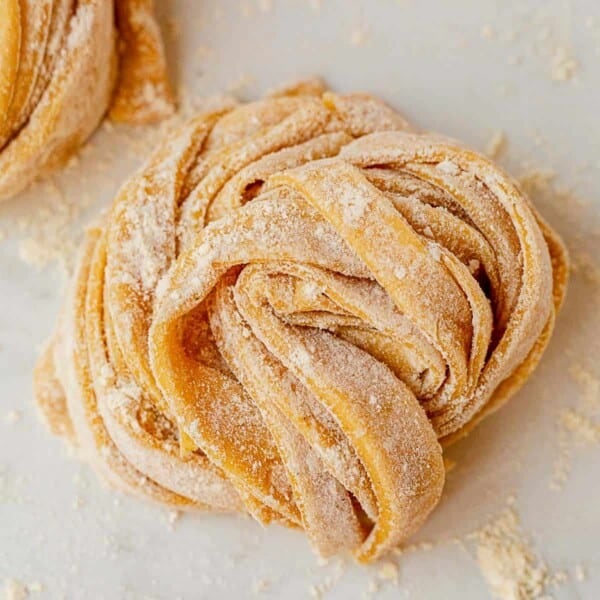
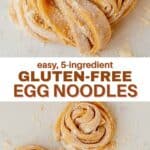









Is it possible to make this without any xanthan gum? Some people with corn allergies have a reaction to that.